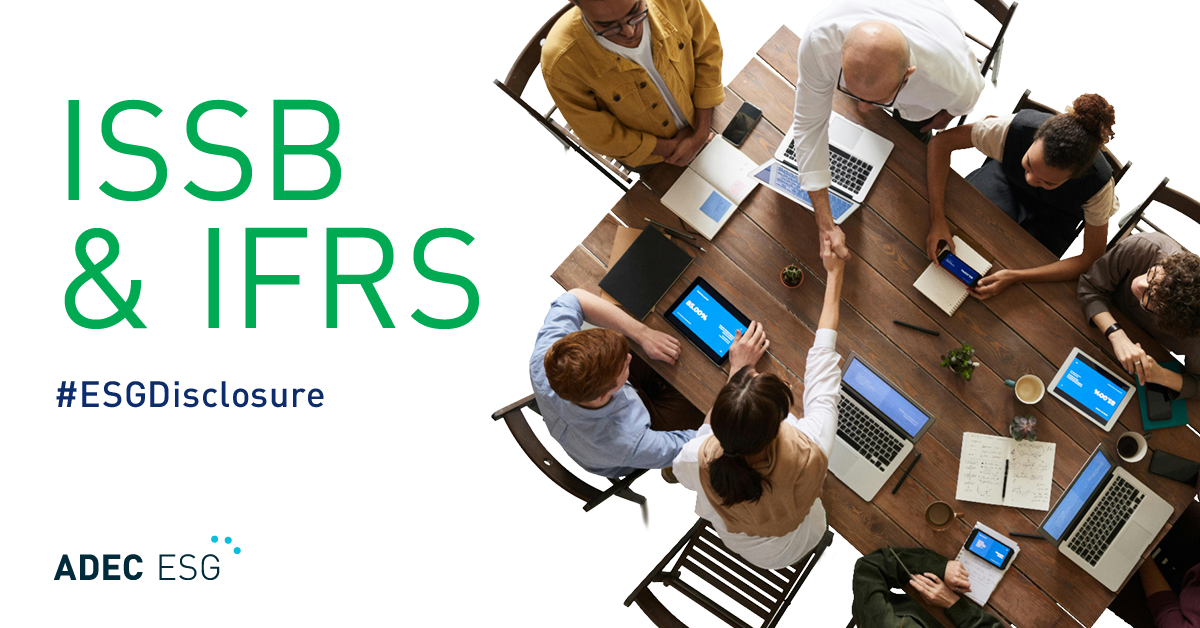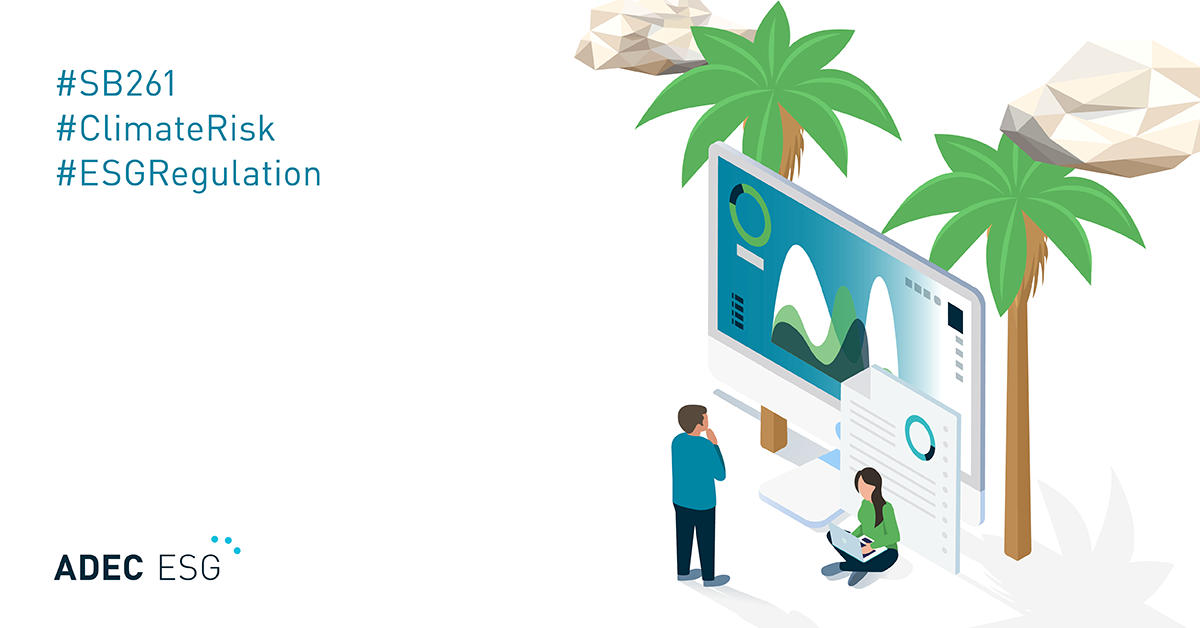The Science-Based Targets initiative, or SBTi, is a corporate climate action organization founded in 2014. Targets are considered science-based if they are in line with the latest climate science necessary to meet the goals of the Paris Agreement, limiting global warming to 1.5 degrees Celsius above pre-industrial levels.
As regulators, standard-setting bodies, and other organizations continue to strive for alignment across the sustainability disclosure space, setting SBTs and reporting in line with CDP are stepping stones that have helped many companies work towards regulatory compliance.
Webinar speakers included Tara Jankowski (Associate Director of Sustainability, ADEC ESG) and Alicia Godlove (Senior Sustainability Services Manager, ADEC ESG). They were joined by Justice Hadley (Associate Director of Disclosure, CDP), who provided input from the reporting platform’s perspective.
During the webinar, each shared their expertise regarding SBTs, CDP, and how both interplay with climate regulations. Watch the full recording, Leveraging CDP and Science-Based Targets for Climate Regulations.
Best practices for science-based targets
Setting SBTs and receiving SBTi approval is a months-long, multi-step process. Our presenters reviewed a number of SBT best practices to help viewers get started and set expectations.
- Secure buy-in from leadership, acknowledging that SBTs are intentionally ambitious, organization-wide endeavors that are quickly becoming standard business practice.
- Understand SBTi’s timelines, as targets must be set within 24 months of signing the commitment letter, beginning the months-long validation process.
- Build a solid data foundation by mapping your own business, choosing an accurate base year, and understanding that GHG-related data may be housed in multiple organizational functions.
- Understand and engage your value chain, as they’re a vital part of reducing your own emissions and meeting your goals.
- Consider third-party assurance, which can boost confidence in your GHG inventory.
Science-based targets in action
Our panel of experts shared various examples of real-world SBT scenarios, including a case study involving a beverage company. This company needed to set an SBT, but some executives considered scope 3 GHG emissions to be outside the company’s control. In their opinions, setting a scope 3 target did not seem plausible.
Working with a third-party firm helped the company:
- Complete a full scope 3 inventory
- Assess emissions hotspots, data quality, and ease of collecting year-over-year data
- Determine that packaging was a large proportion of Category 1 (purchased goods and services) and a promising focus for their SBT
Through discussions with the company’s key suppliers, third-party support helped the company realize the potential for engagement and transitioning to more recycled materials.
Preview of SBTi Corporate Net-Zero Standard V2.0
The webinar also explored the updated SBTi Corporate Net-Zero Standard, which raises the level of ambition and encompasses a more comprehensive scope. It covers base-year performance assessments, target setting, implementation, assessment and communication progress, and claims.
Throughout the rest of 2025 and through 2026, companies can still set near-term targets for 2030 under the current versions of SBTi standards. However, beginning in 2027, companies must use V2.0 to set new near-term and long-term targets. Existing near-term targets are expected to remain valid until 2030 or the end of the target timeframe.
The new standards will also redefine how small- and medium-sized enterprises (SMEs) are categorized within SBTi. V2.0 will do away with the current SME definition, replacing it with a group of “Category B” companies. This casts a wider net for streamlined target setting, as more companies will fall under V2.0’s Category B than the V1.2 SME definition.
Key proposed changes for all companies include:
- Publicly committing to reaching net-zero GHG emissions by no later than 2050
- Develop and publish a climate transition plan within 12 months of initial validation
- Set separate targets for Scope 1 and 2 emissions
- Set a scope 2 location-based emissions reduction target
- Set a scope 2 market-based emissions reduction target OR a zero-carbon electricity target to address scope 2 emissions]
Speakers also discussed new assurance requirements and more nuanced and rigorous scope 3 target changes for Category A companies. To learn more about these in detail, check out the full webinar, Leveraging CDP and Science-Based Targets for Climate Regulations.
Aligning climate regulations with CDP and SBTi
As momentum for sustainability reporting regulations continues to build, companies must assess the impacts of their direct operations and value chain. The good news is that many of these new regulatory requirements overlap considerably with existing voluntary reporting standards like those of CDP and SBTi, and companies already engaged with these platforms will likely find themselves taking advantage of a head start on compliance. This is true at the national, state, regional, and industry levels, explored below.
National and global level
At the national and global levels, large-scale regulatory action is pushing multinational corporations to report on key sustainability issues, account for associated risks, and take climate action. For example, the Corporate Sustainability Reporting Directive (CSRD)’s E1 requirements (as they currently stand) aligns with CDP and SBTi requirements across numerous subtopics such as disclosing a path to net-zero, communicating transition risks and emissions strategy, and governance issues such as internal carbon pricing and how targets are being tracked.
The International Financial Reporting Standards (IFRS) S2 also aligns closely with CDP and, to a lesser extent, with SBTi. CDP and SBTi already require companies to address topics such as board and management governance, climate-related risks and opportunities, and climate-related metrics and targets. Companies engaged with either voluntary platform will be much better positioned to report in line with IFRS standards.
State level
Panelists reviewed highly anticipated state legislation on climate disclosure—the California Climate Accountability Package (SB 253 and SB 261).
Across the board, companies engaged with CDP and SBTi will find themselves extremely well positioned to comply with California’s SB 253 and SB 261. CDP and SBTi already require information on risk management, metrics, strategy, and emissions that can be repurposed for disclosures under California’s disclosure policies.
Industry level
It’s a similar story with New York’s SB S4558B and Washington’s HB 1107—both proposed regulations addressing sustainability in apparel. CDP and SBTi reporters will see information overlap with New York and Washington’s proposed policies in regards to due diligence policies, environmental impact reduction targets, and other topics.
View the full list in detail by watching the webinar.
Leveraging CDP and SBTs for regulatory compliance
As climate regulations evolve and expectations for corporate accountability rise, setting science-based targets is no longer optional — it’s essential. The insights shared by CDP and ADEC ESG experts underscore the importance of leadership buy-in, robust data practices, and proactive value chain engagement.
Organizations that are proactive in validating targets, building climate transition plans, and aligning with existing voluntary disclosure frameworks will be better positioned to meet regulatory demands and demonstrate climate leadership. Whether you’re just beginning your sustainability journey or refining existing targets, the time to act is now.
View the full webinar, “Leveraging CDP and Science-Based Targets for Climate Regulation,” on-demand for free.
ADEC ESG is a CDP Silver Climate Change Consultancy Partner in the U.S. with decades of experience helping global companies meet their sustainability goals.
We offer a suite of services to help streamline your disclosure, including:
- CDP Questionnaire Completion (Full Corporate and SME Questionnaires)
- Scoring Assessments (Full Corporate and SME Questionnaires)
- Supplier Engagement Assessment (SEA)
- On-demand CDP support
To learn more about our CDP services, including fully customized recommendations and flexible on-demand consulting hours, contact our team.
This blog provides general information and does not constitute the rendering of legal, economic, business, or other professional services or advice. Consult with your advisors regarding the applicability of this content to your specific circumstances.




